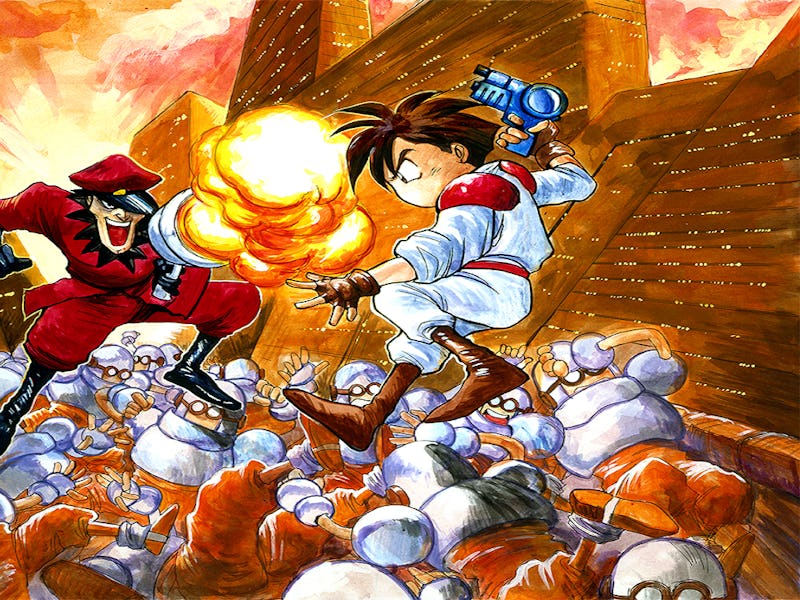You need to play the riskiest Sega platformer ever made on Switch ASAP
Before Pokemon, there was a different Red and Blue.

It’s a perpetual challenge in video games or any type of commercial art: Do you give audiences what they’ve responded to in the past, or do you try to offer them something new? Each road presents potential challenges. With the former, creators risk drowning their audiences in clones of a familiar product. With the latter, getting consumer buy-in is a greater challenge, as is building everything from scratch. One developer in the early ‘90s risked everything for the sake of trying something new.
In 1991, Konami programmer Masato Maegawa was struggling with this very question. Konami was a major player in games, with proven franchises like Teenage Mutant Ninja Turtles and Castlevania driving sales. Speaking to Gamefan a few years later in 1993, he recalled how he “just couldn’t stand making more sequels, but in order to drive sales they must always be made.” He had a burning itch to make something new, so he started holding meetings in coffee shops with other Konami employees who had grown weary of the company’s model.
He found six others, and they would leave Konami together to form Treasure. One of their first decisions? Instead of the SNES games they were used to, they would focus on Sega Genesis. The game that drove them to quit Konami, Gunstar Heroes, is available right now if you’ve subscribed to Nintendo Switch Online + Expansion Pack.
In order to prove Treasure’s worth, Maegawa took on an original licensing project for Sega, McDonald’s Treasure Land Adventure, a clown-based platformer with surprisingly positive reviews. With Ronald McDonald and the Hamburgler satisfied, Treasure got the green light to make a lightning-fast run-n-gun shooter that creates a cacophony of explosive color on the screen.
Gunstar’s plot, as per its manual, surrounds the Gunstar family on the planet Gunstar-9. Twins Red and Blue are battling Colonel Red (no relation) who has brainwashed their older brother, Green. You can pick which brother you want to fight as, but you also have to select one of four weapons and one of four levels to start.
Those four starter weapons include a close-up flamethrower, a chaser gun that tracks down enemies, a lightning rail cannon, and what’s ostensibly a machine gun. Each is fun and unique enough to play around with, but the game gets very interesting when combinations start to form. Gunstar features two weapon slots, and once you activate a regular weapon drop, the attacks change. There are 10 possible weapon combinations, and figuring them out amidst the seemingly endless barrage of enemies is a challenge in itself.
Gunstar Heroes has a charming and colorful art style.
There’s an island level, a mineshaft level, one on top of rooftops, and another where Red or Blue are chasing a rocket upwards. The enemies pile on, rapidly filling the screen faster than you can keep pressing fire. They zoom around, shooting blasts and dropping bombs. When Red or Blue gets close, they can also do a close-up attack, tossing their enemy and throwing them into the ether.
Gunstar Heroes makes the player feel incredibly overpowered. Taking down endless armies is fun as long as it doesn’t weigh the game down or feel too easy. One thing that keeps Gunstar Heroes balanced is the way a health meter can drop in seconds. Dropping down a shaft, two enemy robots set up an electronic fence of sorts. Merely touching the fence sent my meter plummeting from the seventies to the twenties.
Gunstar Heroes is wonderfully replayable. Figuring out which combinations work best for a player’s particular style is half the fun, and setting it loose on the unending rocket hordes and clever bosses is the other half. Maegawa’s big gamble paid off.
This article was originally published on